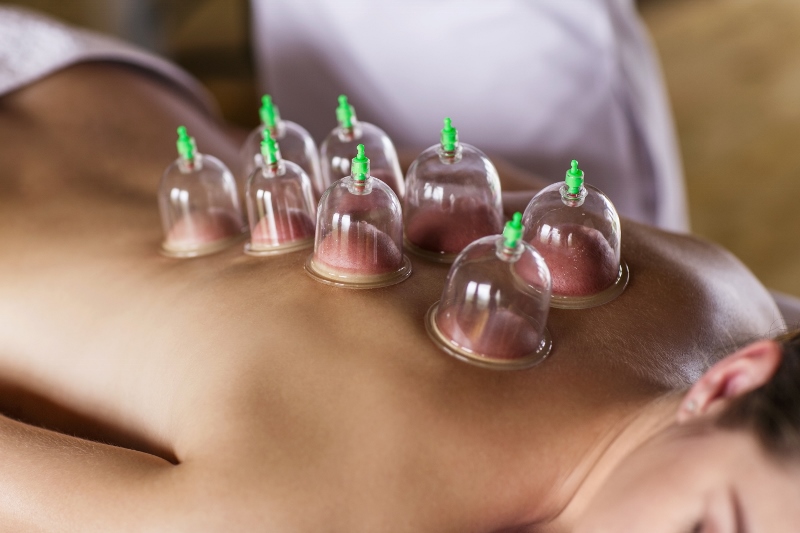What were those marks on Michael Phelps?
Many Olympic athletes are turning to alternative medicine to help enhance their performance. The idea behind cupping is that it will help the athletes heal their strained bodies before their next competition. Olympic athletes push their bodies to new limits and having access to cupping is helping them speed up the time for muscular and soft tissue recovery. Now you’ll have to keep an eye out for the cupping marks on athletes that push their bodies to their limits!
What is cupping therapy?
Cupping therapy has been used for thousands of years in Chinese medicine. Cupping consists of the combination of a suction pressure and massage movements with the use of a suction device. A cup is positioned at the area to be treated and depending on the type of cup being used; a vacuum is created within the cup to draw the underlying tissue into the cup. The suction level can range from light to heavy, and the movements from a session can either be stimulating or sedating, depending on the needs of the client.
During the session, the cups will help increase the blood supply to the muscles and skin, which will then bring nourishment and allow the toxins to be carried away from the veins by opening up the lymphatic pathways. Cupping therapy also softens tight muscles, loosens adhesions and lifts connective tissue.
Why does cupping leave marks?
When injuries occur deep in the muscle, bleeding often occurs causing deep bruising. There will also be edema in the area involving the coagulation of sticky proteins. The combining presence of these elements usually results in stagnation of circulation to the area, resulting in pain, dysfunction, and chronic conditions. The vacuum formed by the cupping draws up the old non-circulating stagnant blood and sticky fluids from the area, bringing them up to the surface and away from the injury so that the heathy free circulation can be restored to the affected area, which will create space for oxygen, living cells and nutrients for faster recovery. Where there is dead, static blood, lymph, cellular debris, pathogenic factors, and toxins present in the body, cupping can leave marks that indicates that the stagnation has been moved from the deeper tissue layers to the surface. The color and pattern of the marks depends on the level of stagnation in the area, can range from light red to dark purple, lasting anywhere from 3 to 14 days. If there is no stagnation the mark will only turn pink and will disappear a few hours after the session. Sites where there is old trauma or injuries may require multiple cupping treatments to remove all the stagnation. During the follow-up sessions you should notice that the marks will be lighter as your body heals.
- It is advised that the following groups of people should avoid cupping:
- Pregnant women
- Those with metastatic cancer (canter that can spread from one part of the body to another)
- Those with muscle spasm or bone fractures
Cupping at Performance Therapies
If you’re interested in learning more about cupping or would like to schedule an appointment, contact Performance Therapies.


